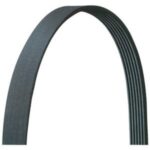Modifying your Nissan Rogue can enhance its appearance and performance. However, it’s crucial to understand the potential risks and responsibilities that come with these modifications. Altering your vehicle’s suspension, for example, can significantly impact its handling, making it behave differently than a factory-equipped Rogue.
Handling Changes and Safety Precautions
A modified Nissan Rogue may require adjusted driving techniques and reduced speeds, especially when navigating sharp turns or performing abrupt maneuvers. Always prioritize safety by wearing seat belts and exercising extreme caution to prevent loss of control or rollovers. Familiarize yourself thoroughly with the unique handling characteristics of your modified Rogue before operating the vehicle. Ignoring these precautions could lead to serious injury or even death.
Legal and State Regulations for Modifications
Not all modifications are legal or recommended. Certain modifications, or combinations thereof, might be prohibited in your state. Before modifying your Nissan Rogue, consult your owner’s manual, the instructions provided with the modification product, and your state’s laws regarding vehicle modifications. You are solely responsible for ensuring the legality and safety of your modified vehicle.
Post-Installation Adjustments: Alignment, Headlamps, and ADAS
After installing modifications on your Nissan Rogue, several adjustments might be necessary:
Wheel Alignment
Your Nissan Rogue may require wheel alignment after modification installation to ensure proper handling and tire wear. This service may incur additional costs.
Headlamp Aim
For your safety and the safety of others, it’s essential to check and adjust your vehicle’s headlamps after modifications. Proper headlamp aim ensures optimal visibility at night. This adjustment may also incur additional costs.
Advanced Driver Assistance Systems (ADAS) Recalibration
If your Nissan Rogue is equipped with ADAS, such as camera or radar-based safety systems, these systems may need recalibration after modification installation. This often requires specialized tools and factory-trained technicians, potentially at an OEM dealership, and may result in additional expenses. Ensure these systems are functioning correctly after any modifications to maintain the vehicle’s safety features. Failing to address these post-installation adjustments could compromise your safety and the safety of others.


